There have been nearly 1,000 Pitcher Debuting in the Major Leagues over the past five years, each bringing their own set of skills and experiences to the game's highest level. This remarkable influx of talent not only adds depth to the teams but also offers a valuable glimpse into the evolving dynamics of pitcher development in modern baseball. Throughout this analysis, we delve into the key attributes of these athletes, such as age, height, weight, and nationality, shedding light on the diversity and physical standards currently prevalent in the league. Additionally, we will investigate the varied routes these pitchers have taken—whether through college, high school, or international avenues—to achieve their dreams of competing in the MLB. This exploration aims to understand how these different backgrounds and developmental paths influence their performance and adaptation to the top tier of baseball.
Age Dynamics in MLB Debuts: Pitcher Debuting in the Major Leagues
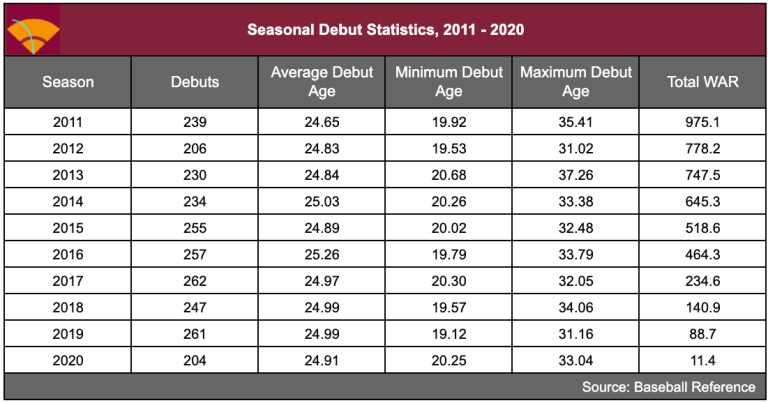
- The Impact of Age on Performance: Age is a crucial factor in a player's development and potential longevity in the sport. According to aging curve analyses by The Hardball Times, pitchers generally experience a peak in performance from their early to late twenties. After reaching their mid-to-late twenties, a decline in fastball velocity is typically observed, which often corresponds with a general decline in overall performance.
- Survivorship Bias and Performance: It's important to recognize survivorship bias when discussing aging and MLB players. This concept reminds us that the data only reflects those who have not only reached but also stayed in the majors, overlooking those who may have retired or been released.
- Age and Command: According to research, pitchers between the ages of 22 and 30 tend to have better control, which is evident by lower walk rates. After this, as velocity declines, so does command, leading to higher walk rates and fewer strikeouts.
Physical Attributes of MLB Pitchers: Pitcher Debuting in the Major Leagues
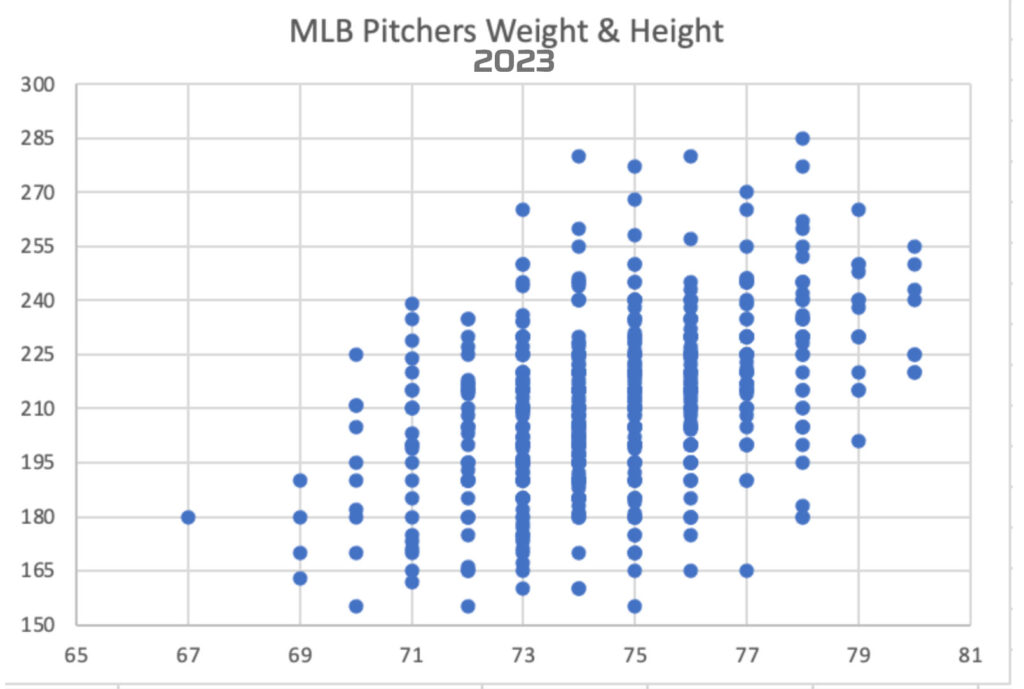
- Height and Weight: The modern MLB pitcher often fits a specific physical mold. On average, debut pitchers are around 6 feet 2.5 inches tall and weigh approximately 215 pounds. This size not only impacts their presence on the mound but also their ability to generate velocity and power.
- The Role of Physical Conditioning: In recent decades, the emphasis on physical conditioning has grown. Pitchers are spending more time in the gym, gaining strength and weight, which has corresponded with an increase in the average weight of MLB players over time.
Nationality and Its Influence: Pitcher Debuting in the Major Leagues
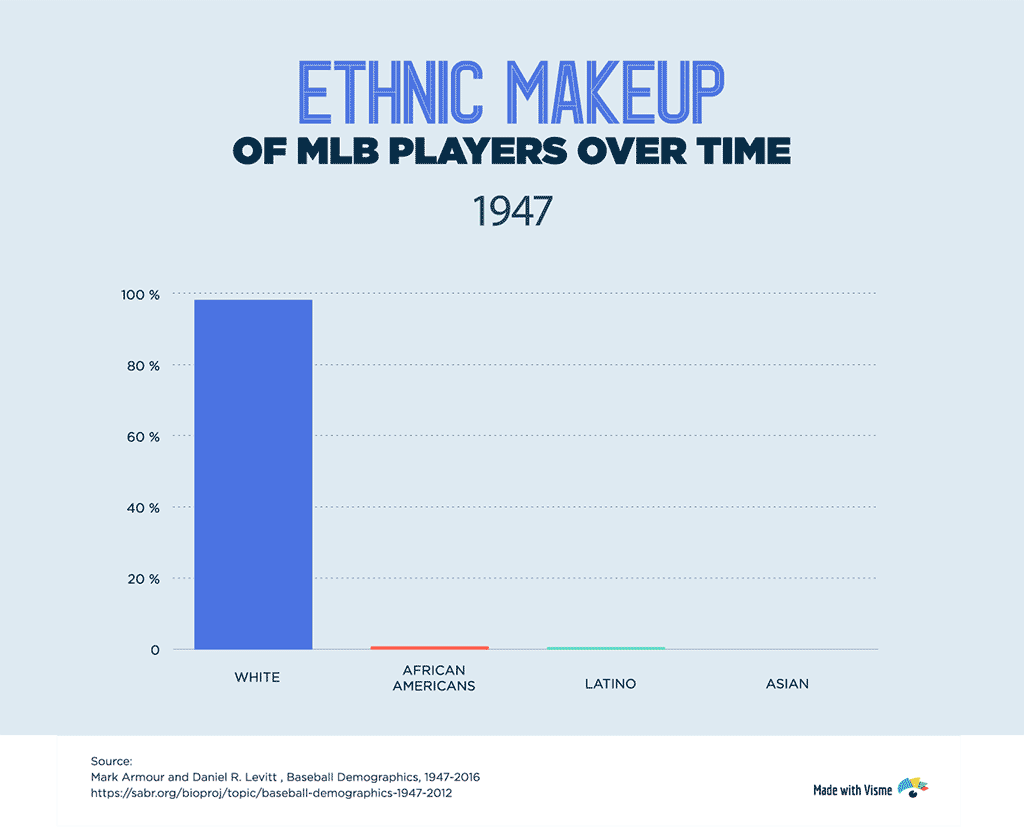
- Global Influence on MLB: MLB is a melting pot of talent from around the world. In recent opening day rosters, players from over 20 different countries were represented, with the United States, the Dominican Republic, and Venezuela leading the way.
- Breakdown by State: In the United States, states like California, Texas, and Florida are hotbeds for baseball talent, consistently producing a high number of professional players due to their size and focus on the sport at the youth and amateur levels.
Pathways to the Major Leagues: Pitcher Debuting in the Major Leagues
- College as a Stepping Stone: A significant majority of pitchers in thew USA make it to the MLB through the college ranks. Institutions like Louisville, Florida, and Vanderbilt are notable for their contribution to MLB talent, highlighting the importance of college baseball as a developmental pathway.
- The Role of International Signings: International free agents make up a substantial portion of MLB debutants, with countries like the Dominican Republic and Venezuela being prolific suppliers of baseball talent. This route offers a different set of challenges and opportunities compared to the traditional American college system.
Comparative Body Sizes Across Major Sports Leagues
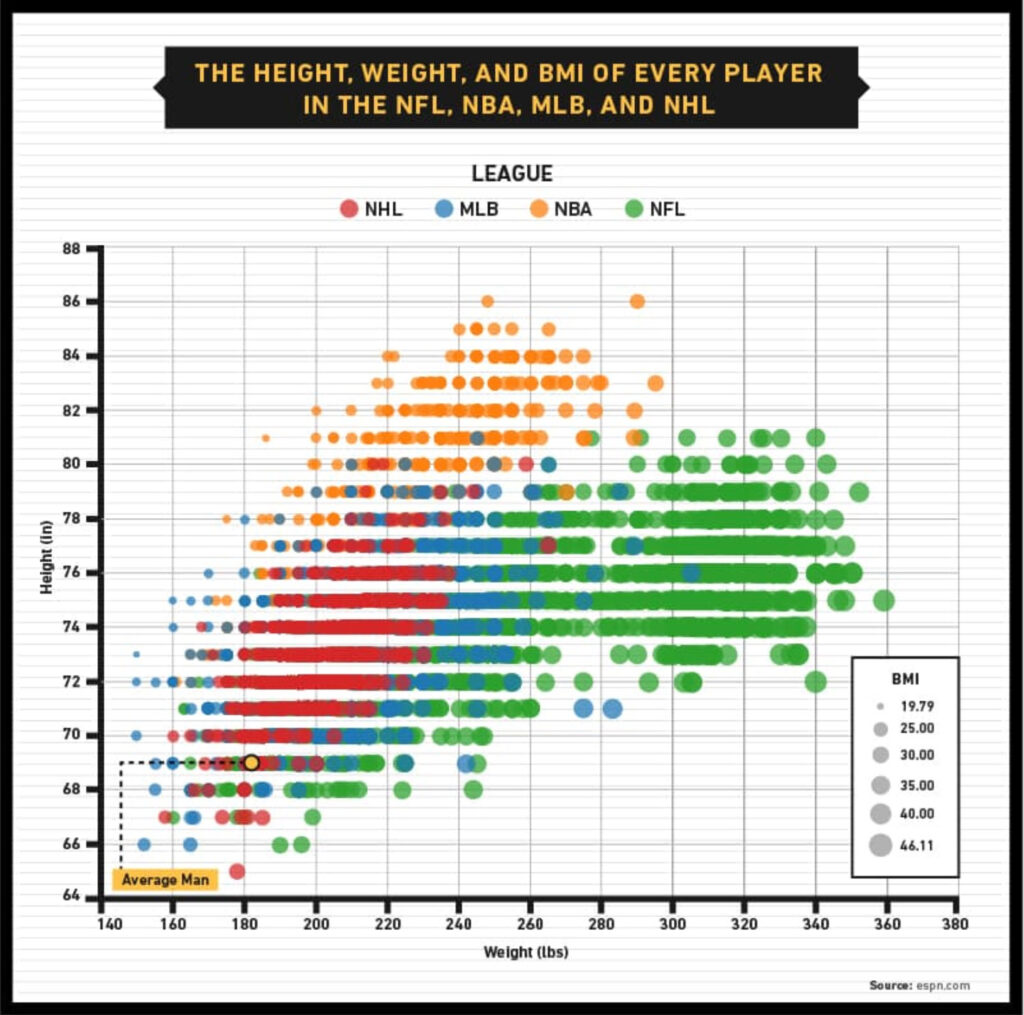
In an extensive analysis of the physical dimensions of athletes across the NFL, NBA, MLB, and NHL, we've identified distinct trends in body sizes that correspond to the unique demands of each sport. Our data compilation included the height, weight, and Body Mass Index (BMI) of players, providing a broad overview of how physical attributes align with the sport-specific roles and requirements.
NFL: A League of Heavier and Bigger Athletes
The NFL stands out for its players' larger body sizes. Athletes in American football tend to have a higher BMI and greater overall weight, reflecting the physical nature of the sport which often rewards mass and power. Positions such as linemen, in particular, exhibit these characteristics due to the sheer physicality and force required at the line of scrimmage.
NBA: Dominance of Height
Basketball players, particularly in the NBA, are notably taller, showcasing the greatest average height among the major sports leagues. This height advantage is crucial in basketball, facilitating scoring and defensive maneuvers like blocking or rebounding. The prominence of height in the NBA underscores the advantage it provides in shooting over defenders and reaching the basket more efficiently.
MLB: Moderate Sizes for Versatile Demands
Contrasting with the NFL and NBA, MLB players generally display more moderate body sizes. The sport of baseball requires a balance of skills that does not necessarily benefit significantly from the extremes of height or weight. Instead, attributes like hand-eye coordination, speed, and agility play pivotal roles in batting and fielding, making a moderate physique more suited to the diverse demands of the game.
NHL: Leaner Builds for Agility and Speed
Hockey players in the NHL typically have smaller and leaner physiques compared to their counterparts in other major leagues. The demands of ice hockey—including speed, endurance, and agility—are better supported by a more compact build. This physique facilitates quicker movements and more sustained energy levels, which are essential given the fast-paced nature of the sport.
Overall, these trends highlight the adaptation of athlete body sizes to the specific physical requirements and strategic needs of their respective sports. While the NFL and NBA might see advantages in more extreme body types, the MLB and NHL show that success in sports can also come from adapting physical traits to enhance other critical skills and abilities.
Impact of the 3X Pitching Velocity Program on MLB Drafts and Player Performance
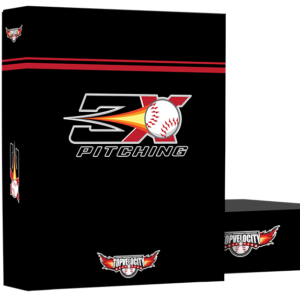 Numerous baseball players' careers have benefited greatly from Brent Pourciau's 3X Pitching Velocity Program, which has improved their pitching velocity and overall performance. This program's primary objective is to develop elite pitching athletes through scientifically-backed training methods, focusing on biomechanics, functional strength, and advanced conditioning techniques.
Numerous baseball players' careers have benefited greatly from Brent Pourciau's 3X Pitching Velocity Program, which has improved their pitching velocity and overall performance. This program's primary objective is to develop elite pitching athletes through scientifically-backed training methods, focusing on biomechanics, functional strength, and advanced conditioning techniques.
Success Stories and Draft Impact
Several participants of the 3X Pitching Velocity Program have seen measurable improvements in their pitching speeds, which have directly contributed to their attractiveness as prospects in MLB drafts. The program's comprehensive approach addresses not only physical capabilities but also educates athletes on the mechanics of pitching, injury prevention, and recovery processes. Many pitchers have benefited from this all-encompassing training program by gaining the speed and endurance necessary to stand out during scouting evaluations, raising their draft stock and opportunities to catch the attention of major league teams.
Performance Enhancement in the Major Leagues
Once in the MLB, the benefits of the 3X Pitching Velocity Program continue to manifest. Athletes who have undergone this training often experience sustained improvements in performance, thanks to the foundational strength and mechanical efficiency developed through the program. For instance, pitchers are able to maintain higher velocity rates deeper into games and across the season. Moreover, the focus on injury prevention within the program equips players with the knowledge and techniques to avoid common pitching injuries, thereby extending their careers.
Case Studies and Endorsements
The success of the program can be seen in the career trajectories of its alumni. Many have credited their increased performance and longevity in professional baseball to the techniques and training regimens learned through the 3X Pitching Velocity Program. Endorsements from coaches, scouts, and players themselves underscore the effectiveness of the program in developing top-tier pitching talent. These testimonials and case studies serve as powerful evidence of the program's impact, encouraging more athletes to participate and benefit from its offerings.
In conclusion, the 3X Pitching Velocity Program has proven to be a pivotal development tool for aspiring MLB pitchers. By focusing on the core aspects of pitching velocity and durability, it not only helps players get drafted but also significantly enhances their performance and career longevity in Major League Baseball.
FAQs: Pitcher Debuting in the Major Leagues
1. What is the average height and weight of athletes in the NFL compared to other major leagues?
- NFL players tend to have the highest average weight and BMI among the major sports leagues, reflecting the physical demands of American football. In contrast, NBA players generally exhibit the greatest height, advantageous for shooting and defending in basketball.
2. Why are MLB players not as tall or heavy as NBA or NFL players?
- MLB requires a balance of skills such as speed, agility, and hand-eye coordination that do not necessarily benefit from extreme height or weight. Therefore, players in Major League Baseball tend to have more moderate body sizes to accommodate the diverse demands of batting, fielding, and running bases.
3. How do the physical dimensions of NHL players compare to those in other sports leagues?
- NHL players typically have leaner builds than athletes in the NFL, NBA, or MLB. This smaller, more compact physique supports the agility, speed, and endurance needed for ice hockey, where players must maintain quick movements and high levels of energy throughout the game.
4. Does the body size of an athlete impact their performance in their respective sport?
- Yes, body size can significantly impact an athlete's performance depending on the sport. For example, greater height is a distinct advantage in basketball for rebounding and shooting, while a heavier, more robust build benefits NFL players due to the physical contact and strength required.
5. Are there any sports where smaller body size is an advantage?
- In sports like gymnastics and diving, a smaller body size can be beneficial due to the requirements for high levels of flexibility, precision, and the ability to perform complex aerial maneuvers. Similarly, in ice hockey, a leaner build can enhance a player's speed and agility on the ice.
For more exclusive content visit TopVelocity Patreon!

